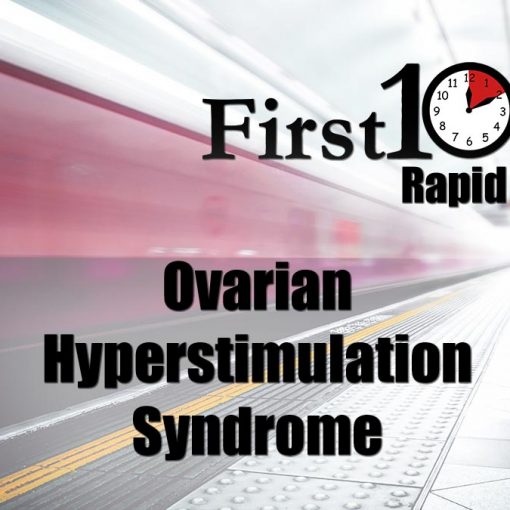Case
A 45 year old man, well known to your department because of a prior anoxic brain injury and multiple complications including a permanent tracheostomy, is brought in by ambulance from home in respiratory distress. You know from prior conversations with the family that the patient is to receive full, aggressive medical management. He is using every accessory muscle that you can see, his respiratory rate is 55, and his oxygen saturation is 87% on room air…
My approach
Call for help. You will want RT present. You may also want ENT and someone who can operate a fiberoptic scope (if that isn’t you).
Ensure all your difficult airway equipment is out and ready.
Apply oxygen to both the patient’s face and the tracheostomy site. (If there has been a laryngectomy, there will be no connection between the upper airway and the trachea, but if you are not sure, put oxygen on the face.)
Assess for breathing (air movement) by looking, listening, and feeling at both the mouth and the tracheostomy. Waveform capnography should be applied if available.
Is the tracheostomy patent and appropriately placed?
- Detach any external device, such as a humidifier or speaking valve
- Remove the inner cannula
- Attempt to pass a suction catheter. If it passes, you have a patent airway. Suction, and consider partial obstruction. Ventilate via the tracheostomy if required. Continue with your standard dyspnea work-up
- If the suction catheter does not pass, deflate the cuff (if present) and then reassess for breathing and oxygenation
- If immediately available, especially if the patient is not hypoxic and there was a previous difficult airway, you can inspect the tracheostomy with a fiberoptic scope to rule out obstruction and displacement
- If there was no improvement with deflation of the cuff, remove the tracheostomy tube
Key question: Is there a patent upper airway? In patients with normal upper airway anatomy, you are going attempt to ventilate or intubate orally. In patients with a laryngectomy, or with large tumors that occlude the airway, skip those steps.
Attempt to ventilate using standard upper airway techniques, such as oral and nasal airways, bag-valve-mask, or LMAs. To do this, you will have to occlude the stoma with gentle pressure. (Skip if laryngectomy.)
If unsuccessful, attempt to ventilate via the stoma. You can apply a small pediatric facemask or a size 2 LMA over the stoma and attempt to BVM ventilate. To prevent air leak, have an assistant close the patient’s mouth and nose.
Proceed to standard oral intubation. (Skip if laryngectomy.)
If unsuccessful, attempt to intubate the stoma. I would insert a bougie first, feel for hold-up, and then advance a small (6.0) cuffed ETT over top. You may also use a replacement trach (generally, a smaller size than the one removed).
Algorithms from the UK National Tracheostomy Safety Project:
Reproduced from McGrath BA, Bates L, Atkinson D, Moore JA. Multidisciplinary guidelines for the management of tracheostomy and laryngectomy airway emergencies. Anaesthesia. 2012 Jun 26. doi: 10.1111/j.1365-2044.2012.07217, with permission from the Association of Anaesthetists of Great Britain & Ireland/Blackwell Publishing Ltd.
Notes
For every patient with a laryngectomy (no remaining connection between the upper airway and the trachea), there are 20-30 patients with tracheostomies (the connection remains).
The initial approach to a deteriorating patient with a tracheostomy is similar to the approach to the intubated patient, so it is reasonable to start with the DOPES mnemonic:
- Displacement of the tube
- Obstruction of the tube
- Pneumothorax
- Equipment problems (ventilator)
- Stacked breaths
In general, do not replace a tracheostomy that is less than 7 days old. Call ENT. (However, if the patient is dying, you aren’t going to wait for the surgeon. In emergency medicine, we often have to break these kinds of rules. I would use a bougie through the stoma first, both because of its smaller size, and the potential to ‘confirm’ that you are in the airway. I would then advance a small sized tube over top.)
Title image is by Janet Fong, from the image library of the Department of Anaesthesia and Intensive Care at the Chinese University of Hong Kong (http://www.aic.cuhk.edu.hk/web8/Images.htm)
Other FOAMed Resources
National Tracheostomy Safety Project
Tracheostomy emergencies on EMCrit
Tracheostomy in the Critical Care Airway Mangement (CCAM) course handbook
The Technologically Dependent Child on PEM Playbook
Respiratory Distress in a Tracheostomy Patient on LITFL
LMA to stoma ventilation on RESUS.ME
Trouble with Trachs – Recannulating the Stenosed Trach Site on Taming the SRU
Tracheostomy emergencies at Intensive
References
Ball DR, Paton L, Jefferson P, Caldwell D. Tracheostomy ventilation using a laryngeal mask as a ‘bridge to extubation’. Anaesthesia. 2010;65:(12)1232-3. PMID: 21182613
McGrath BA et al. Multidisciplinary guidelines for the management of tracheostomy and laryngectomy airway emergencies. Anaesthesia. 2012;67:1025-41. PMID: 22731935
Townsley RB, Baring DE, Clark LJ. Emergency department care of a patient after a total laryngectomy. Eur J Emerg Med. 2014;21:(3)164-9. PMID: 23426202
Patel MR, Cannon TY, Shores CG. Chapter 242. Complications of Airway Devices. In: Tintinalli J et al. eds. Tintinalli’s Emergency Medicine: A Comprehensive Study Guide, 7e. New York, NY: McGraw-Hill; 2011. http://accessmedicine.mhmedical.com/content.aspx?bookid=348&Sectionid=40381728
Greenwood JC and Winters ME. Tracheostomy Care. In: Roberts JR, ed. Roberts and Hedges’ clinical procedures in emergency medicine, 6e. Philadelphia,PA: Elsevier; 2014.
O’Connor MF, Glick DB. Airway Management. In: Hall JB, Schmidt GA, Kress JP.eds. Principles of Critical Care, 4e. New York, NY: McGraw-Hill; 2015. http://accessmedicine.mhmedical.com/content.aspx?bookid=1340&Sectionid=80032102
Morris LL, Whitmer A, McIntosh E. Tracheostomy care and complications in the intensive care unit. Crit Care Nurse. 2013;33:(5)18-30. PMID: 24085825
Morgenstern, J. Respiratory distress in the patient with a tracheostomy, First10EM, May 26, 2015. Available at:
https://doi.org/10.51684/FIRS.425








3 thoughts on “Respiratory distress in the patient with a tracheostomy”